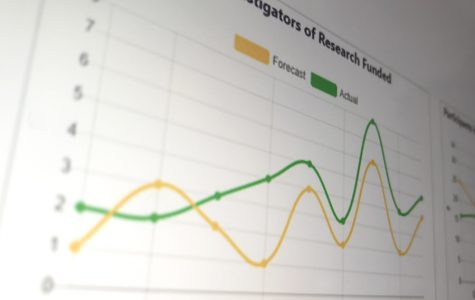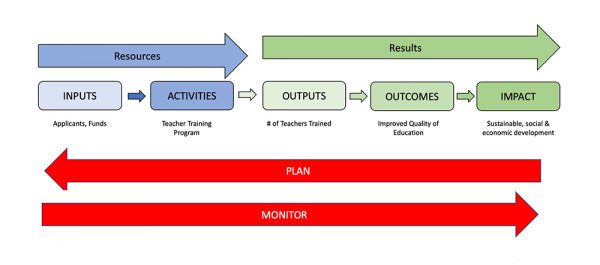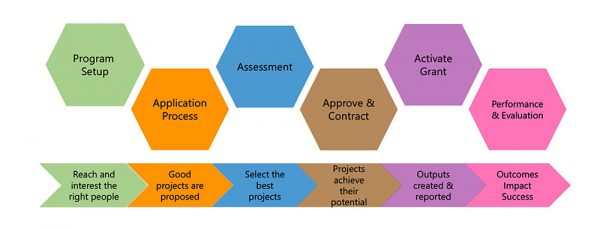
Our colleague, Christina Gentile-Paytas, has written an article for Peak Grantmaking, ‘Unlocking the path to success’- https://www.peakgrantmaking.org/insights/unlocking-the-puzzle-of-success/
Christina brings her background as a program operations manager for a grant maker and product specialist at CC Technology to share some considerations on program design for success.
One of the biggest misconceptions of grantmaking is that giving away money is easy. On the contrary, it is a difficult, yet exciting, process to piece together a puzzle that affects change.
One challenge of piecing that puzzle together is how funders can select projects with the greatest likelihood to maximize mission impact. Even when monitoring and evaluation weren’t formalized, it was always done somehow, someway, and somewhere to capture what worked and what didn’t.
Now, there is greater understanding that systematically capturing planned results and monitoring actual progress and achievement ultimately helps funders, grantees, and donors. Monitoring, evaluation and learning has become a crucial part of the grantmaking process.
Next, the puzzle needs a system that can underpin a more robust and systematic process of monitoring, evaluation and learning.
But what does that really mean? Well, it depends on who you ask. Funders are visionaries who want to invest their resources in effecting change, setting a framework through their funding areas establishing what success looks like, and relying on their applicants to bring unique components to complete the puzzle. Applicants need to think of their projects holistically, and consider what their project proposal hypothesis, outputs, outcomes, and impact look like (and how they will measure progress and success) to achieve the results they, and the prospective funder, aspires to. Donors want to see that the funding organization they support is achieving the mission and goals they have identified. And each of them needs the humility and understanding to learn, evolve, and sometimes change their puzzle pieces.
- Funder Strategy – Funders exist to spark change. Categorizing the pieces, the activities, outputs and outcomes, to achieve change, are critical. But it doesn’t stop there, targeted change needs to be clearly communicated to attract the best possible applicants who can work alongside you to achieve success.
- Applicant Hypothesis – Applicants focus on their project specifically. Their work helps to discover and deliver the pieces, helping to accomplish the very change the Funder wants to propagate.
- Donor Engagement – Donors are excited to contribute to funders who can achieve what they alone cannot.
 The results chain – planning projects from right to left but monitoring progress and performance from left to right.
The results chain – planning projects from right to left but monitoring progress and performance from left to right.
Each of these cohorts – funder, applicant, and donor – play vital roles in providing the resources, energy, innovation, and collaboration; moving and shifting until the puzzle comes together. What they all need is a system to make it easier.
A system that helps funders to set out a framework of results, guides applicants in defining how their proposals will contribute, and a mechanism to monitor and evaluate the achievement of expected results during and post project implementation. And to help communicate and showcase results to donors or trustees!
Funders offering a results framework or logic model as part of their application can help applicants think more strategically about how their project fits within the larger puzzle and how indicators can help in the monitoring and evaluation of progress. Using a system with this feature built in, can make what some find daunting, an easier task especially when it can flex from simple to complex.
The consistent collection of data across the application and review stages, along with reporting of actual progress towards results during the life of the project, can provide early indications of success and possibly ways to adjust.
Once a project has completed the proposed activities, all reported metrics and other qualitative indicators across a portfolio or grant, can be accumulated in a variety of ways for presentation. For example, in a research funding scenario, integrations with research data repositories and tools such as ORCID or Dimensions, can capture and report grant related academic outputs and outcomes such as publications and citations, to help demonstrate progress towards the strategic priorities of the organization. News, social media mentions, and grantee reports can also be captured and included for additional evidence of outputs and outcomes of a grant. These results can be formatted and customized per the Funder to be shared with your Board, Donors, or even on your website.
In order to facilitate a result-based management approach – planning, monitoring, evaluation and learning – and improve the difference funding makes in the achievement of impact, every facet of the grants management system must work in unison.
CC Grant Tracker helps you record how the expected results can be achieved from project activities, set indicators to measure and monitor grantee progress, record and aggregate grantee results during the life of their project and beyond, and assemble impact evidence by Program Area creating a visual narrative to share with your Donors or Board. Our solution provides a robust and flexible mechanism to underpin the administration and management of your grant making processes while helping you to unlock the puzzle of success.
